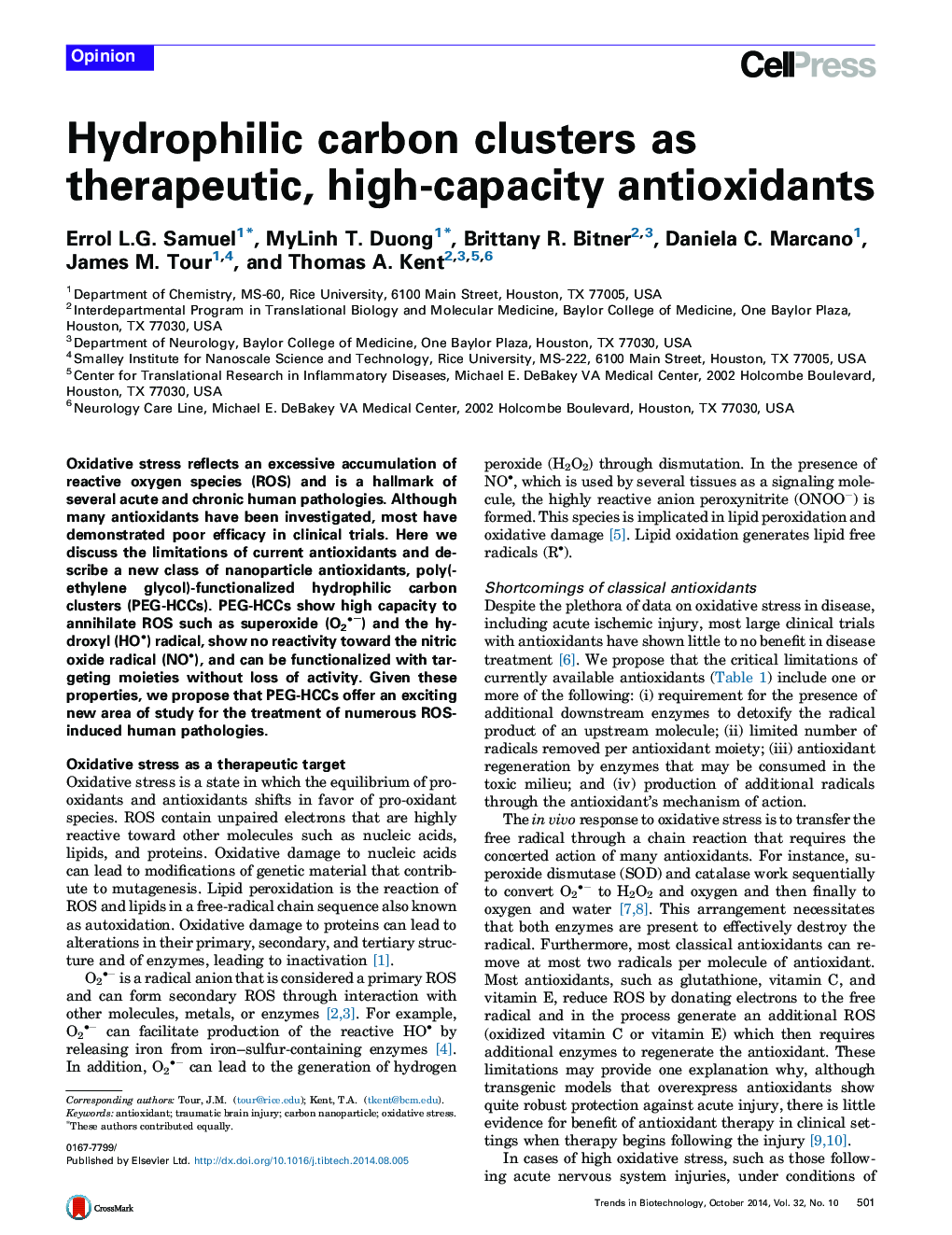| Article ID | Journal | Published Year | Pages | File Type |
|---|---|---|---|---|
| 37005 | Trends in Biotechnology | 2014 | 5 Pages |
•Most antioxidants show little efficacy following trauma such as TBI or stroke.•Carbon nanoparticles quench O2•−, affording no downstream radicals.•Each nontoxic nanoparticle can annihilate thousands of O2•− molecules; the same nanoparticles are selective, being inert to NO•.•Prospects are shown for the treatment of numerous O2•−-induced human pathologies.
Oxidative stress reflects an excessive accumulation of reactive oxygen species (ROS) and is a hallmark of several acute and chronic human pathologies. Although many antioxidants have been investigated, most have demonstrated poor efficacy in clinical trials. Here we discuss the limitations of current antioxidants and describe a new class of nanoparticle antioxidants, poly(ethylene glycol)-functionalized hydrophilic carbon clusters (PEG-HCCs). PEG-HCCs show high capacity to annihilate ROS such as superoxide (O2•−) and the hydroxyl (HO•) radical, show no reactivity toward the nitric oxide radical (NO•), and can be functionalized with targeting moieties without loss of activity. Given these properties, we propose that PEG-HCCs offer an exciting new area of study for the treatment of numerous ROS-induced human pathologies.
